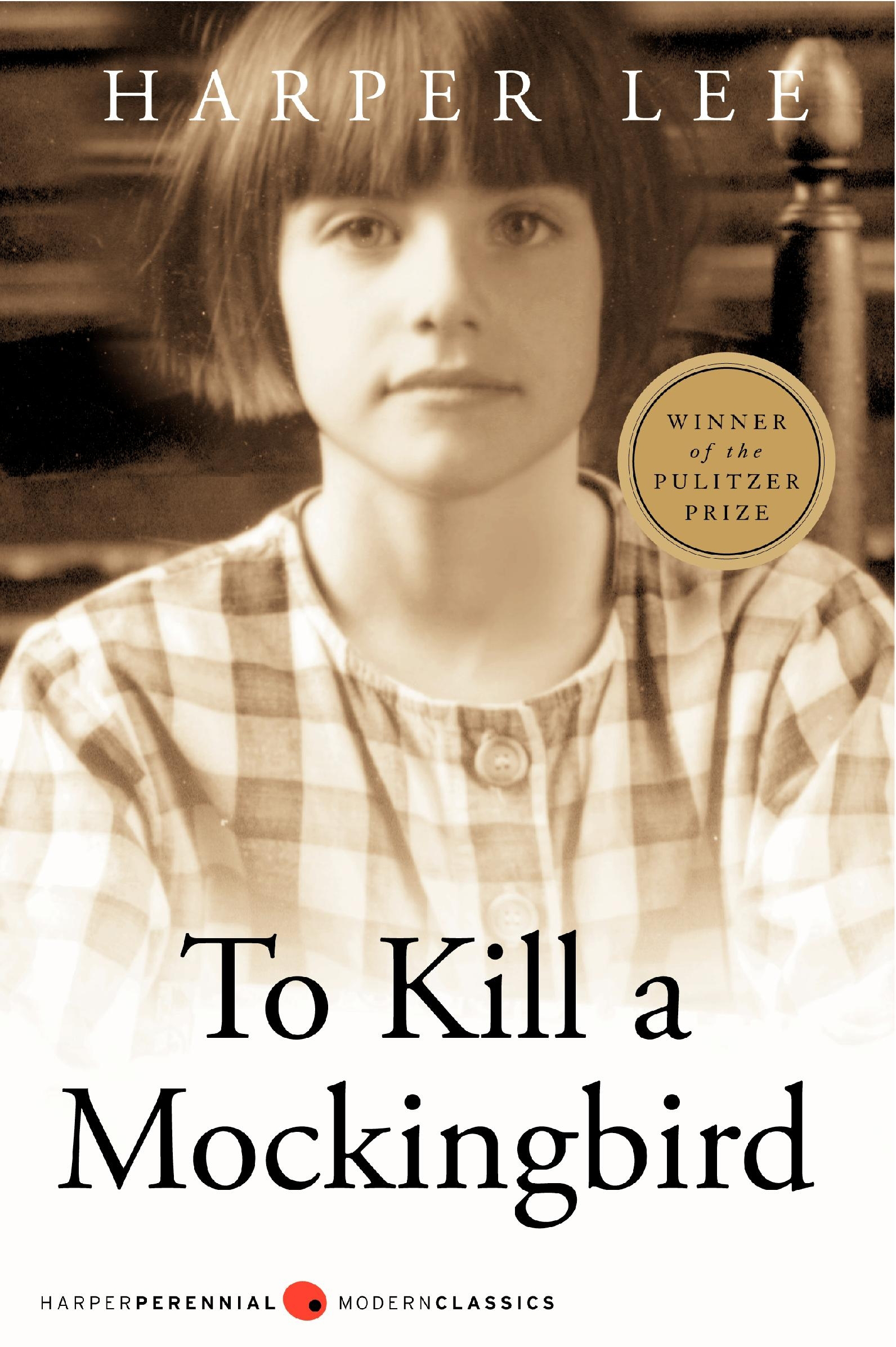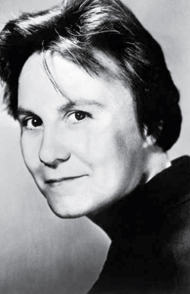To Kill a Mockingbird

Overview
Harper Lee's To Kill a Mockingbird is the rare American novel that can be discovered with excitement in adolescence and reread into adulthood without fear of disappointment. Few novels so appealingly evoke the daily world of childhood in a way that seems convincing whether you are 16 or 66.
"Writing is a process of self-discipline you must learn before you can call yourself a writer. There are people who write, but I think they're quite different from people who must write." —from a 1964 interview
Overview
Harper Lee's To Kill a Mockingbird is the rare American novel that can be discovered with excitement in adolescence and reread into adulthood without fear of disappointment. Few novels so appealingly evoke the daily world of childhood in a way that seems convincing whether you are 16 or 66.
Introduction to the Book
Harper Lee's To Kill a Mockingbird begins at the end. The novel opens with the adult Jean Louise "Scout" Finch writing, "When he was nearly thirteen, my brother Jem got his arm badly broken at the elbow." By the time Jem finally gets around to breaking his arm more than 250 pages later most readers will have forgotten they were ever warned. This echoes the way the whole book unfolds—in no special hurry, with lifelike indirection. Nothing happens all by itself. The book's two plots inch forward along parallel tracks, only converging near the end.
The first plot revolves around Arthur "Boo" Radley, who lives in a shuttered house down the street from the Finches and is rumored to be some kind of monster. Scout, Jem, and their next-door neighbor Dill engage in pranks, trying to make Boo show himself. Unexpectedly, Boo reciprocates their interest with a series of small gifts, until he ultimately steps off his porch and into their lives when they need him most.
The second story concerns Scout and Jem's father, the attorney Atticus Finch. The local judge appoints him to defend a black man, Tom Robinson, who is falsely accused of raping a white woman. Atticus suspects he will lose the case, but he faces up to the challenge just the same, at one point heroically stepping between his client and a lynch mob.
Along with its twin plot lines, To Kill a Mockingbird has two broad themes: tolerance and justice. Lee treats the first through the children's fear of their mysterious neighbor. She illustrates the second with Atticus's courage in defending Robinson to the best of his ability, despite the racial prejudices of their small Southern town.
Tying the stories together is a simple but profound piece of advice Atticus gives Scout: "You never really understand a person until you consider things from his point of view.... Until you climb inside of his skin and walk around in it." By the end of the novel, Scout has done exactly that—guessed at the pain not only beneath Tom Robinson's skin, but also under that of her neighbor.
How the Novel Came to Be Written
Any claims for To Kill a Mockingbird as a book that changed history could not have seemed more far-fetched one winter night in 1958, as Nelle Harper Lee huddled in her outer-borough New York apartment trying to finesse her unruly, episodic manuscript into some semblance of a cohesive novel. All but drowning in multiple drafts of the same material, Lee suddenly threw open a window and scattered five years of work onto the dirty snow below.
Did Lee really intend to destroy To Kill a Mockingbird? We'll never know. Fortunately, in the next moment, she called her editor. J.B. Lippincott's formidable Tay Hohoff promptly sent her outside to gather all the pages back–thus rescuing To Kill a Mockingbird from the slush.
The novel had its origins in Lee's hometown of Monroeville, Alabama—the small, Southern town that the fictional Maycomb is based upon. Her father's unsuccessful defense of a black man and his son accused of murder, in addition to the Scottsboro Boys trials and another notorious interracial rape case, helped to shape Lee's budding social conscience and sense of a dramatic story.
Along with his legal practice, Lee's father published and edited the town newspaper. His regard for the written word impacted Lee's sensibility as surely as his respect for the law. Lee would name her idealized vision of her father after Titus Pomponius Atticus, a friend of the Roman orator Cicero renowned as, according to Lee, "a wise, learned and humane man." For a long time, Lee called her work in progress Atticus. Once she fastened on To Kill a Mockingbird she did not look back.
An early version of the novel, titled Go Set a Watchman, featured Scout as an adult returning to Maycomb. Lee’s editor, Tay Hohoff, asked her to rewrite the story from a child’s perspective, which she did. Until recently, the manuscript for Go Set a Watchman was believed lost. It was discovered decades later and published by HarperCollins in July 2015.
Lippincott finally published To Kill a Mockingbird on July 11, 1960, by which time an unprecedented four national mail-order book clubs had already selected it for their readers. The first line of the Washington Post's review echoed many similar notices that praised the novel for its moral impact: "A hundred pounds of sermons on tolerance, or an equal measure of invective deploring the lack of it, will weigh far less in the scale of enlightenment than a mere 18 ounces of new fiction bearing the title To Kill a Mockingbird."
Eighty weeks later, the novel still perched on the hardcover bestseller list. During that time, it had won the Pulitzer Prize for fiction and the hearts of American readers. One can't help wondering how literary history might have been different had Harper Lee thrown her manuscript out the window on a slightly windier night.
- Why do you think Harper Lee chose as her novel's epigraph this quote from Charles Lamb: "Lawyers, I suppose, were children once"?
- Why does the adult Scout begin her narrative with Jem's broken arm and a brief family history?
- How does Boo Radley 's past history of violence foreshadow his method of protecting Jem and Scout? Does this aggression make him more, or less, of a sympathetic character?
- How does the town of Maycomb function as a character with its own personality, rather than merely as a backdrop for the novel's events?
- Atticus teaches Scout that compromise is not bending the law, but "an agreement reached by mutual consent." Does Scout apply or reject this definition of compromise? What are examples of her obedience to and defiance of this principle?
- The novel takes place during the Great Depression. How do class divisions and family quarrels highlight racial tensions in Maycomb?
- Atticus believes that to understand life from someone else's perspective, we must "walk in his or her shoes." From what other perspectives does Scout see her fellow townspeople?
- How does Atticus quietly protest Jim Crow laws even before Tom Robinson's trial?
- What does Jem learn when Atticus forces him to read to Mrs. Dubose as a punishment? Why does the lawyer regard this woman as the "bravest person" he ever knew?
- Since their mother is dead, several women—Calpurnia, Miss Maudie, and Aunt Alexandra—function as mother figures to Scout and Jem. Discuss the ways these three women influence Scout's growing understanding of what it means to be a Southern "lady."
- Why does Atticus Finch risk his reputation, his friendships, and his career to take Tom Robinson's case? Do you think he risks too much by putting his children in harm's way?
- What elements of this novel did you find funny, memorable, or inspiring? Are there any characters whose beliefs or actions impressed or surprised you? Did any events lead you to revisit childhood memories or see them in a new light?
- Adult readers may focus so much on the novel's politics that they may neglect the coming-of-age story. What does Scout learn, and how does she change in the course of her narrative?


